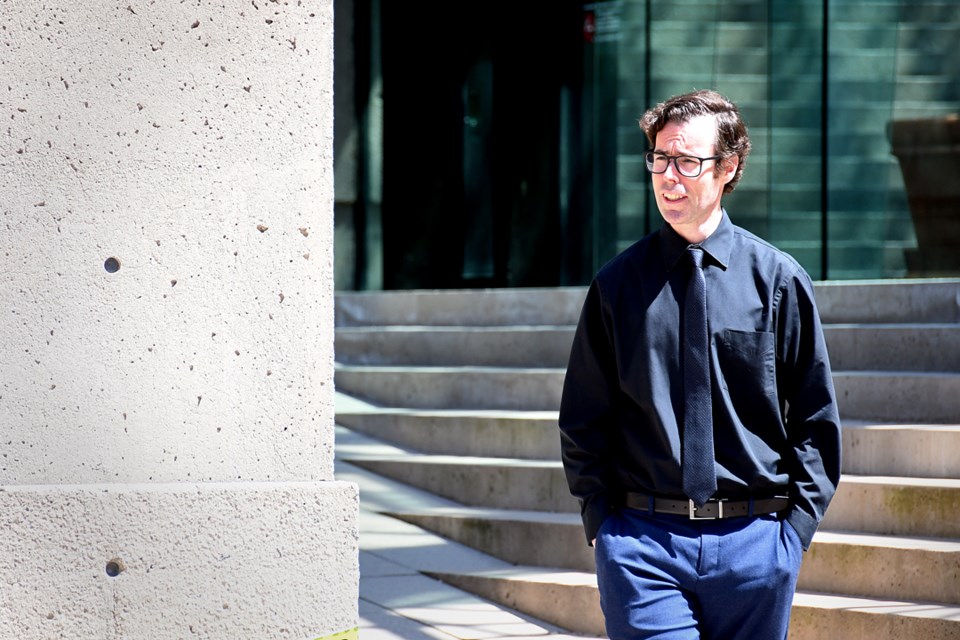Advisory: This story includes disturbing details about a murder trial
The findings of a forensic pathologist who concluded strangulation had led to the death of a 13-year-old girl found dead in a Burnaby park six year ago were challenged under cross examination Wednesday.
Dr. Jason Morin, a forensic pathologist who autopsied the girl’s body, has been on the witness stand at the trial of Ibrahim Ali in B.C. Supreme Court in Vancouver all week.
Ali is accused of first-degree murder in the death of the teen, whose body was found in Burnaby’s Central Park in the early morning hours of July 19, 2017, less than two hours after her family reported her missing.
The victim’s identity is protected by a publication ban.
'Equivocal language'
Morin told the jury earlier in the week he believed the victim had been strangled.
“That’s a certain conclusion. I didn’t find anything else at autopsy,” Morin said under cross examination Wednesday.
But defence lawyer Ben Lynskey noted Morin had expressed his findings less certainly in his autopsy report, in which he stated strangulation had been “the most likely cause of death.”
Lynskey said Morin had used “equivocal language” in his report for a reason.
‘You’re saying this is the most likely cause because there’s no evidence of anything else. Fair?” he asked.
“I don’t think that’s my intention with using that language, no,” Morin responded. “I’m saying there’s findings there; the findings are suspicious and consistent with strangulation, but I wasn’t there; I didn’t witness the event.”
Lynskey pushed further.
“If you had a body that you were examining and it had a gunshot wound to the head, you wouldn’t write your report in such an equivocal way,” he said. “You’d say the cause of death was this gunshot wound in the forehead. If there’s a clear cause of death that’s 100 per cent certain, you would say that in the report, and you wouldn’t use this type of language. Fair?
“OK, I would agree with that.”
Pinpoint bleeding or pooling blood?
Lynskey also challenged Morin’s conclusions about redness in the victim’s face.
As soon as he unzipped the body bag to begin his autopsy, Morin had said he noticed her face was redder than the rest of her body.
He pointed to petechiae, tiny pinpoints of bleeding under the skin, on her face, under her chin and in her eyes, saying such small hemorrhages are one of the most common findings in strangulation cases.
But Lynskey suggested the redness in the victim’s face could also have been caused by blood pooling if her body had been lying on a slope in the park with her head lower than her feet.
“It potentially could,” Morin said. “The slope would have to be relatively steep for that to explain some of it. It might not explain all of it. It really depends on the position.”
Lynskey asked Morin if he knew how the body had been positioned.
“It’s difficult for me to know the exact positioning,” Morin said.
Other witnesses have testified the girl’s body was found in the forest in a natural indentation or divot in the ground.
When asked by Lynskey, however, none could recall whether the body had been lying on a slope
Lynskey also highlighted Morin had found no internal or external injuries to the victim's neck.
Morin had testified earlier that it takes a minimum of 4.4 pounds of pressure to collapse the jugular vein, disrupt the supply of oxygen to the brain and cause the pinpoint bleeding.
When asked how much pressure it takes to bruise the skin, however, Morin said he "didn't really know."
The pathologist's cross examination is expected to last through most of Thursday.
Follow Cornelia Naylor on Twitter @CorNaylor
Email [email protected]



